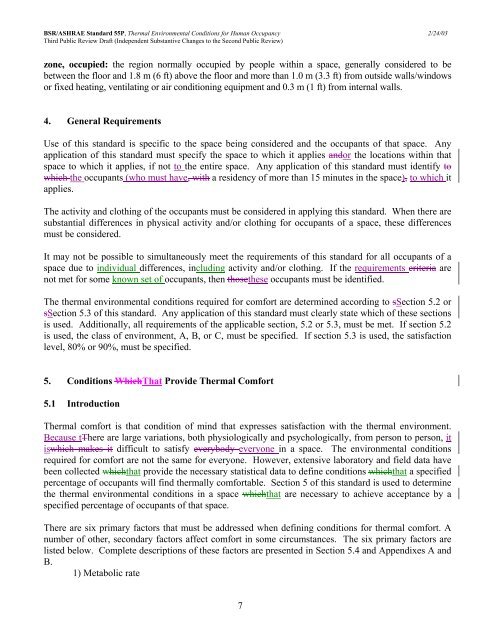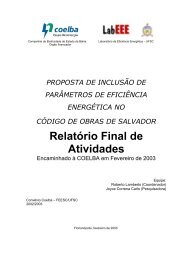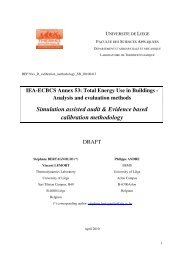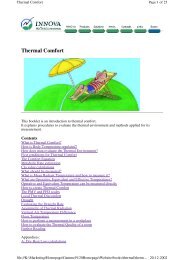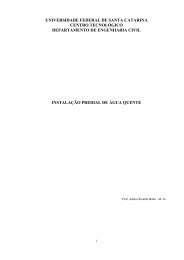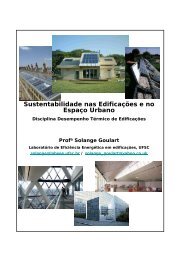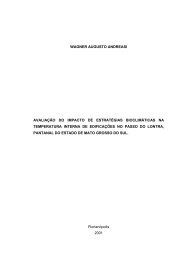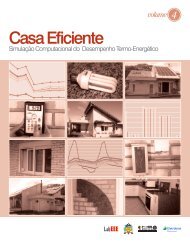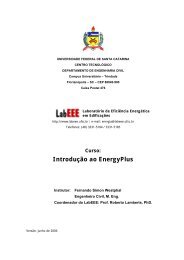ASHRAE STANDARD - 55R
ASHRAE STANDARD - 55R
ASHRAE STANDARD - 55R
You also want an ePaper? Increase the reach of your titles
YUMPU automatically turns print PDFs into web optimized ePapers that Google loves.
BSR/<strong>ASHRAE</strong> Standard 55P, Thermal Environmental Conditions for Human Occupancy 2/24/03<br />
Third Public Review Draft (Independent Substantive Changes to the Second Public Review)<br />
zone, occupied: the region normally occupied by people within a space, generally considered to be<br />
between the floor and 1.8 m (6 ft) above the floor and more than 1.0 m (3.3 ft) from outside walls/windows<br />
or fixed heating, ventilating or air conditioning equipment and 0.3 m (1 ft) from internal walls.<br />
4. General Requirements<br />
Use of this standard is specific to the space being considered and the occupants of that space. Any<br />
application of this standard must specify the space to which it applies andor the locations within that<br />
space to which it applies, if not to the entire space. Any application of this standard must identify to<br />
which the occupants (who must have, with a residency of more than 15 minutes in the space), to which it<br />
applies.<br />
The activity and clothing of the occupants must be considered in applying this standard. When there are<br />
substantial differences in physical activity and/or clothing for occupants of a space, these differences<br />
must be considered.<br />
It may not be possible to simultaneously meet the requirements of this standard for all occupants of a<br />
space due to individual differences, including activity and/or clothing. If the requirements criteria are<br />
not met for some known set of occupants, then thosethese occupants must be identified.<br />
The thermal environmental conditions required for comfort are determined according to sSection 5.2 or<br />
sSection 5.3 of this standard. Any application of this standard must clearly state which of these sections<br />
is used. Additionally, all requirements of the applicable section, 5.2 or 5.3, must be met. If section 5.2<br />
is used, the class of environment, A, B, or C, must be specified. If section 5.3 is used, the satisfaction<br />
level, 80% or 90%, must be specified.<br />
5. Conditions WhichThat Provide Thermal Comfort<br />
5.1 Introduction<br />
Thermal comfort is that condition of mind that expresses satisfaction with the thermal environment.<br />
Because tThere are large variations, both physiologically and psychologically, from person to person, it<br />
iswhich makes it difficult to satisfy everybody everyone in a space. The environmental conditions<br />
required for comfort are not the same for everyone. However, extensive laboratory and field data have<br />
been collected whichthat provide the necessary statistical data to define conditions whichthat a specified<br />
percentage of occupants will find thermally comfortable. Section 5 of this standard is used to determine<br />
the thermal environmental conditions in a space whichthat are necessary to achieve acceptance by a<br />
specified percentage of occupants of that space.<br />
There are six primary factors that must be addressed when defining conditions for thermal comfort. A<br />
number of other, secondary factors affect comfort in some circumstances. The six primary factors are<br />
listed below. Complete descriptions of these factors are presented in Section 5.4 and Appendixes A and<br />
B.<br />
1) Metabolic rate<br />
7


